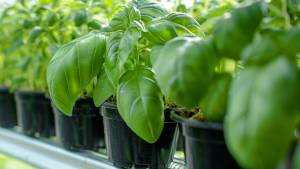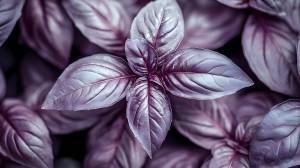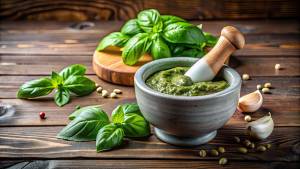A Guide to Growing Basil in a Greenhouse


Basil, with its unmistakable aroma and vibrant flavour, is a staple in many kitchens around the world. While this Mediterranean herb loves warm, sunny climates, growing basil in the UK can be challenging due to unpredictable weather and cool temperatures. However, a greenhouse provides the perfect controlled environment for basil to thrive, allowing British gardeners to enjoy fresh, flavourful basil year-round. In this guide to growing Basil in a greenhouse, we’ll explore everything you need to know about growing basil in a greenhouse—from selecting the right varieties to caring for your plants, harvesting, and enjoying the incredible flavours of home-grown basil in your cooking.
Why Grow Basil in a Greenhouse?
Basil thrives in warm, sunny environments, and while it can grow outdoors during the summer months, it’s highly sensitive to cold, frost, and wind. A greenhouse offers several advantages for growing basil:
- Extended Growing Season: A greenhouse allows you to grow basil beyond the short UK summer, giving you fresh herbs from spring to autumn, and even through winter if the greenhouse is heated.
- Consistent Warmth: Basil is a heat-loving plant, and the controlled environment of a greenhouse ensures it gets the warmth it needs without the risk of cold spells or sudden temperature drops.
- Protection from Weather: In the UK, rain, wind, and cool nights can hinder basil growth outdoors. A greenhouse provides shelter and protection from these elements, allowing basil to flourish in a more stable environment.
- Reduced Pest Problems: Greenhouse gardening can help minimise pest issues, particularly those that thrive in outdoor gardens like slugs and snails.
Choosing the Right Varieties of Basil
There are many different varieties of basil, each with its own unique flavour profile, growth habit, and culinary use. Here are some of the best varieties to grow in a greenhouse:
- Sweet Basil (Ocimum basilicum)
- Flavour: Sweet, slightly peppery, and aromatic.
- Best For: Pesto, salads, pasta dishes, and tomato-based sauces.
- Growing Tips: Sweet basil is the most common variety and thrives in the warm, sunny conditions of a greenhouse. It’s fast-growing and can be harvested throughout the growing season.
- Genovese Basil (Ocimum basilicum ‘Genovese’)
- Flavour: Intense, fragrant, with large leaves.
- Best For: Authentic Italian pesto, bruschetta, and fresh tomato dishes.
- Growing Tips: This variety is a favourite for making pesto and other Italian dishes. Genovese basil prefers full sun and well-draining soil, making it perfect for greenhouse cultivation.
- Thai Basil (Ocimum basilicum ‘Siam Queen’)
- Flavour: Sweet with anise and liquorice notes.
- Best For: Thai and Southeast Asian dishes, stir-fries, and curries.
- Growing Tips: Thai basil adds a unique flavour to Asian cuisine. It prefers similar growing conditions to sweet basil but can tolerate slightly higher humidity levels, which makes it a good choice for a humid greenhouse.
- Lemon Basil (Ocimum × citriodorum)
- Flavour: Citrus-scented with a refreshing lemon flavour.

- Growing Tips: Lemon basil’s distinct flavour works well in both sweet and savoury dishes. It requires full sunlight and regular watering but should not be overwatered to avoid root rot.
- Purple Basil (Ocimum basilicum ‘Purpurascens’)
- Flavour: Milder than sweet basil, with a slightly spicy undertone.
- Best For: Decorative garnishes, salads, and herbal infusions.
- Growing Tips: Purple basil adds a striking visual element to your greenhouse with its dark purple leaves. It grows well in the same conditions as sweet basil but may need a bit more sunlight to enhance its colour.
How to Grow and Care for Basil in a Greenhouse
Basil is relatively easy to grow in a greenhouse if you follow a few basic care tips. Here’s how to ensure your basil plants thrive:
- Light Requirements
Basil is a sun-loving herb that needs plenty of light to grow well. In a greenhouse, position your basil plants in the sunniest spot, ensuring they receive at least 6-8 hours of sunlight daily. If sunlight is limited, especially during winter, consider using supplemental grow lights to ensure the plants get enough light to thrive.
- Temperature and Humidity
Basil prefers warm temperatures, ideally between 21-26°C (70-80°F). In a greenhouse, it’s easy to maintain these conditions. However, avoid temperatures below 10°C (50°F), as basil is highly sensitive to cold and can quickly become damaged. If growing basil during colder months, using a greenhouse heater may be necessary to keep temperatures within the optimal range.
Basil also prefers moderate humidity levels, so ensure proper ventilation in the greenhouse to prevent excessive moisture build-up, which can lead to fungal diseases.
- Soil and Potting Mix
Basil thrives in well-drained, nutrient-rich soil. When growing in containers or raised beds in the greenhouse, use a good-quality potting mix that is light and airy. A mix of garden compost and perlite or sand can improve drainage, which is essential for preventing root rot.
- Watering
Basil likes consistently moist soil but is susceptible to root rot if waterlogged. Water your basil plants regularly, ensuring the soil is kept moist but not soggy. In a greenhouse, the warm environment can cause the soil to dry out quickly, so check soil moisture levels frequently and water when the top inch of soil feels dry.
- Feeding and Fertilising
Basil is a relatively fast-growing plant and benefits from regular feeding to encourage lush, healthy growth. Use a balanced, organic liquid fertiliser every 2-4 weeks during the growing season. Be careful not to over-fertilise, as this can lead to excessive foliage growth at the expense of flavour.
- Pruning and Pinching
To encourage bushier growth, pinch off the top leaves of the basil plants regularly. This prevents the plant from becoming leggy and encourages it to produce more leaves. Removing any flower buds that appear is also important, as once basil flowers, it tends to lose some of its flavour.
- Companion Planting
Basil grows well with other herbs like oregano, thyme, and parsley. It also makes an excellent companion plant for tomatoes, as the two have similar growing requirements. Plus, basil is thought to enhance the flavour of tomatoes and can help repel pests like aphids.
Common Pests and Diseases
While greenhouse-grown basil is protected from many outdoor pests, it can still face challenges from insects and diseases. Here are a few common issues and how to manage them:
- Aphids
- Problem: Aphids can cluster on the tender new growth, sucking sap and weakening the plant.
- Solution: Introduce natural predators like ladybirds or use a mild insecticidal soap spray to control aphid populations.
- Whiteflies
- Problem: Whiteflies can infest basil plants, particularly in warm greenhouse environments.
- Solution: Use sticky traps or spray with neem oil to reduce whitefly populations.
- Powdery Mildew
- Problem: Powdery mildew is a fungal disease that can appear on basil leaves, especially in humid conditions.
- Solution: Ensure good air circulation in the greenhouse and avoid overhead watering. If mildew appears, remove affected leaves and treat with an organic fungicide.
- Root Rot
- Problem: Overwatering can lead to root rot, causing the plant to wilt and die.
- Solution: Ensure proper drainage in pots and raised beds, and water sparingly. Always check soil moisture before watering.
Harvesting Basil
Harvesting basil regularly encourages the plant to produce more leaves and ensures you get the best flavour from your home-grown herbs. Here’s how to harvest basil for the best results:
- When to Harvest: Start harvesting basil once the plant has at least 6-8 inches of growth. You can continue harvesting throughout the growing season by snipping off the top 2-3 sets of leaves.
- How to Harvest: Use sharp scissors or garden shears to snip the stems just above a leaf pair. This encourages the plant to branch out and grow more leaves. Avoid removing more than one-third of the plant at a time to keep it healthy.
- Storing Basil: Fresh basil can be used immediately, but if you have an abundance, you can also store it for later use. Basil doesn’t dry well, as it loses much of its flavour, but you can freeze it in ice cube trays with olive oil or blend it into pesto for freezing.
Recipes Using Home-Grown Basil
One of the greatest rewards of growing basil is being able to use it fresh in your cooking. Here are a couple of simple yet delicious recipes that showcase the vibr

ant flavour of home-grown basil:
- Classic Basil Pesto
- Ingredients: Fresh basil leaves, garlic, pine nuts, Parmesan cheese, olive oil, salt, and pepper.
- Method: Blend basil, garlic, and pine nuts in a food processor. Gradually add olive oil until the mixture becomes a smooth paste. Stir in grated Parmesan, and season with salt and pepper. This versatile pesto can be used with pasta, on sandwiches, or as a dip.
Conclusion
Our Guide to Growing Basil in a Greenhouse provides plenty of tips and tricks, which can be used when growing other herbs. You will be able to use Basil all year round whether its in a homemade pesto or with other home made meals. Whether you are an experienced grower or a simple gardener Basil is a great herb to have in your garden!
